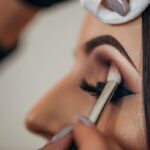Becoming a fashion designer is a dream for many who are captivated by the world of style, fabric, and creativity. It’s not just about sketching designs or sewing clothes—fashion designing is a profession that demands creativity, business savvy, and an eye for detail. But what exactly does it mean to be a fashion designer, and how can you carve a name for yourself in this fiercely competitive industry?
Let’s dive deep into what it takes to become a successful fashion designer and what the role entails, from ideation to execution.
Who is a Fashion Designer?
A fashion designer is a creative professional who designs clothing, accessories, and footwear, often shaping the trends that will dominate runways and wardrobes. These designers play a pivotal role in how people express themselves through clothing, marrying creativity with technical skills to bring ideas to life.
Whether you dream of launching your own brand or working for a major label, becoming a fashion designer requires both artistic talent and the ability to predict what consumers will want next.
Key Responsibilities of a Fashion Designer
Fashion designers don’t just sketch pretty dresses and call it a day. Their role is multifaceted, involving everything from conceptualization to final production. Here’s what a typical day might include:
- Researching trends: Designers need to stay ahead of the curve by understanding what’s in vogue. This means attending fashion shows, reading fashion magazines, and analyzing consumer behavior.
- Sketching ideas: Whether on paper or digitally, sketching is an essential part of a designer’s toolkit. This helps to visualize the garment before moving on to actual production.
- Choosing materials: Designers pick fabrics, colors, and patterns that align with their vision. The fabric isn’t just about looks; it has to feel right and be functional for the garment’s purpose.
- Collaborating with manufacturers: A design won’t get far without a team to help bring it to life. Designers work closely with manufacturers, tailors, and other professionals to turn ideas into reality.
- Overseeing production: From sample-making to final assembly, designers oversee the production process, ensuring that every detail is executed perfectly.
The Journey of a Fashion Designer: Steps to Success
Want to break into the fashion industry? The path to becoming a successful fashion designer involves a mix of education, experience, and networking. Let’s take a closer look at the journey:
1. Get Educated
While natural talent is invaluable, formal education can help refine your skills. Many aspiring fashion designers choose to attend fashion schools, where they can learn about textile science, pattern-making, and marketing.
Top fashion schools like the Fashion Institute of Technology (FIT) or Central Saint Martins offer specialized programs that provide a solid foundation in fashion design. You’ll also get hands-on experience through internships, which can be a stepping stone to your first job.
2. Build a Portfolio
Your portfolio is your golden ticket into the fashion industry. It showcases your creativity, skills, and ability to think outside the box. A well-curated portfolio should include:
- Sketches and finished garments
- Photos of models wearing your designs
- Inspiration boards showing your creative process
- Written descriptions of your design concepts
This portfolio should evolve as you gain more experience and refine your style.
3. Gain Industry Experience
Nothing beats real-world experience. Internships, apprenticeships, or entry-level positions can provide invaluable insight into how the fashion industry works. Whether you’re working with an established brand or a local boutique, hands-on experience helps build your network and your skills.
4. Network
As with any creative industry, who you know can be as important as what you know. Attend fashion events, collaborate with other designers, and don’t hesitate to reach out to established professionals for mentorship. Networking can open doors to opportunities you may not have found on your own.
5. Launch Your Own Line or Work for a Brand
Once you’ve honed your skills, you have a decision to make: will you start your own fashion label or work for an existing brand? Both paths have their challenges and rewards. Launching your own brand offers creative freedom but requires business acumen and financial investment. On the other hand, working for a brand gives you the stability of a salary and the opportunity to learn from industry veterans.
Types of Fashion Designers
The fashion world is broad, offering many specialized roles within the industry. Here’s a quick overview of the different types of fashion designers:
- Haute Couture Designers: These designers create one-of-a-kind, custom-fitted pieces for high-end clients. Think Chanel, Dior, or Valentino.
- Ready-to-Wear Designers: This group creates stylish yet mass-produced clothing for everyday consumers. Brands like Zara, H&M, and Michael Kors operate in this space.
- Footwear Designers: Specializing in shoes, these designers work on everything from luxury heels to comfortable sneakers.
- Accessory Designers: From handbags to scarves and jewelry, accessory designers create the perfect finishing touch for any outfit.
- Costume Designers: Working in film, TV, or theater, costume designers craft the looks that help tell a story on screen or stage.
Skills Every Fashion Designer Should Have
There’s no doubt about it—being a fashion designer takes more than just an eye for style. Here are some of the must-have skills:
- Creativity: First and foremost, fashion designers are artists. You need to constantly think outside the box and bring fresh ideas to the table.
- Attention to Detail: A perfectly executed garment is all in the details—whether it’s the stitch work, the fabric choice, or the fit.
- Technical Skills: From drawing to sewing, you need to be comfortable with the technical aspects of fashion design. Computer-aided design (CAD) is becoming more important in this digital age.
- Time Management: Fashion is fast-paced. You’ll need to juggle multiple projects at once, meeting deadlines without compromising on quality.
- Business Sense: Whether running your own label or working for a company, understanding the business side of fashion—like budgeting, marketing, and consumer behavior—is essential.
FAQs about Becoming a Fashion Designer
What qualifications do I need to become a fashion designer?
Most fashion designers have a bachelor’s degree in fashion design or a related field. However, a portfolio demonstrating your skills can sometimes outweigh formal education.
Do fashion designers need to know how to sew?
While it’s not a strict requirement, knowing how to sew can be a huge advantage. Understanding garment construction helps you create more practical designs.
How much do fashion designers earn?
Fashion designer salaries vary greatly depending on experience, location, and whether you work for a brand or have your own label. Entry-level designers may earn around $50,000 a year, while top designers can make millions.
Is it difficult to become a fashion designer?
Breaking into the fashion industry is challenging, but with the right mix of talent, education, and persistence, it’s possible to succeed.
What’s the difference between fashion design and fashion merchandising?
Fashion design is all about creating new clothing and accessories. Fashion merchandising, on the other hand, focuses on the business side of fashion—like buying, selling, and marketing garments.
Conclusion
A career as a fashion designer is a blend of creativity, dedication, and business savvy. It’s a role that allows you to make a statement and leave your mark on the world. Whether you’re sketching a cutting-edge runway piece or designing a cozy sweater for the mass market, the possibilities in fashion are endless. Ready to unleash your creativity and become the next big name in fashion?







